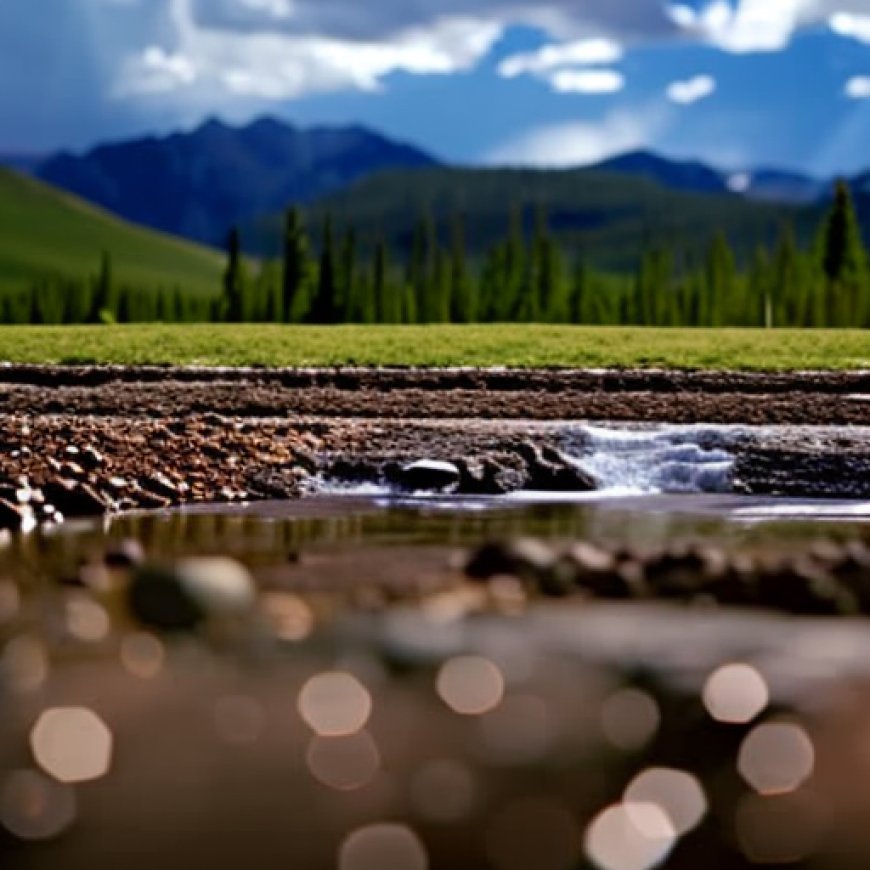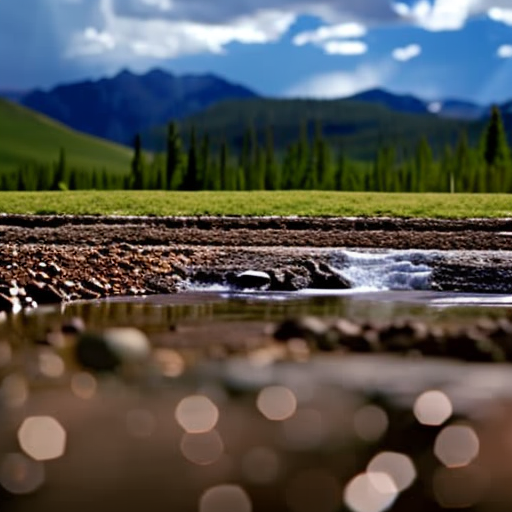Groundwater levels decrease in Ravalli County following years of below average rainfall
Groundwater levels decrease in Ravalli County following years of below average rainfall Ravalli Republic


The Bitterroot Valley’s Aquifer and the Sustainable Development Goals
Introduction
The outlook for the Bitterroot Valley’s aquifer is mixed as groundwater levels decrease following three years of below average precipitation.
Increasing Well Development
There were roughly 16,000 wells total in Ravalli County in 2000. In 2023, there were 25,375 wells, representing a nearly 60% increase that aligns with outward development in Ravalli County that relies on new areas of the Bitterroot aquifer. Eighty percent of 2023’s wells are used for residential purposes, according to the non-regulatory agency Montana Bureau of Mines and Geology (MBMG).
Residential Well Development
That level of residential well development is typical for western Montana, said Sara Edinberg, a hydrogeologist with MBMG, adding that number is typically around 75% to 83% for water basins.
Depleting Aquifer
Still, outflow of the Bitterroot aquifer is currently greater than inflow, meaning the aquifer could be depleting gradually in some areas. According to the MBMG, the aquifer beneath Hamilton receives 89,253 acre-ft every year in water, while 92,165 acre-ft leaves the aquifer.
Residential Water Usage
Residential use does play a small part in the total amount of water leaving the aquifer. Roughly 3% of the total outflow is attributed to domestic use in Hamilton, with the biggest consumptive use being in watering green lawns. The vast majority of the outflow ends up in surface water like the Bitterroot River.
Changing Water Usage
While residential use increased in Ravalli County from 2000 to 2015 by roughly 16%, groundwater use in total from 2000 to 2015 decreased. In 2000, 9.2 million gallons were used per day. In 2015, 8.37 million gallons were used per day. “The amount of water use actually hasn’t changed all that much, but the proportions of what the water is being used for has changed,” Edinberg said. Irrigation usage of groundwater has dropped almost by half during those 15 years to make up 2.57 million gallons of the 8.37 million gallons per day in 2015.
Precipitation and Groundwater Levels
In the past 12 quarters, or three years, monitored wells have shown below average precipitation. Edinberg said decreased precipitation is contributing to a declining groundwater level in some wells. Additionally, water levels have become more responsive to changing amounts of rainfall throughout the seasons. “Over the last few years, these water levels have been declining in response to that,” she said. “So, one pattern we see in the valley is that things are mimicking precipitation trends.”
Impact of Land Use Changes
Todd Myse, a research hydrogeologist with MBMG, said much of the recharge of groundwater is through irrigation practices using surface water. That could change with future residential expansion onto former agricultural land. “A lot of the recharge that’s happening to the local aquifer here is through irrigation — 35% of what we calculated,” Myse said. “So, any sort of land use changes, whether a rancher decides to go from ranching, to subdividing, you’re changing that recharge into the aquifer.”
Managing Aquifer Recharge
In a meeting Monday, commissioners expressed interest in having MBMG studying managed aquifer recharge, something passed last legislative session that can deal with earlier spring runoffs that result in much lower groundwater levels in domestic wells later in the season. Earlier this year, Ravalli County Commissioners made a first-ever condition of approval for the planned Sapphire Valley Estates subdivision to monitor residential wells to ensure the subdivision doesn’t exceed its allotted amount of water. The condition was imposed after concerns from neighboring residents about depleting groundwater levels, and a district court ruling that found governing bodies like counties need to more fully consider environmental impacts in subdivisions.
Drought Conditions
The National Integrated Drought System shows parts of Ravalli County being in a severe drought, while the rest of the county is in a moderate drought. Last summer, the county became eligible for emergency federal loan assistance after being designated as one of 11 primary drought disaster areas in Montana.
SDGs, Targets, and Indicators Analysis
1. Which SDGs are addressed or connected to the issues highlighted in the article?
- SDG 6: Clean Water and Sanitation
- SDG 11: Sustainable Cities and Communities
- SDG 13: Climate Action
2. What specific targets under those SDGs can be identified based on the article’s content?
- SDG 6.4: By 2030, substantially increase water-use efficiency across all sectors and ensure sustainable withdrawals and supply of freshwater to address water scarcity.
- SDG 11.3: By 2030, enhance inclusive and sustainable urbanization and capacity for participatory, integrated, and sustainable human settlement planning and management in all countries.
- SDG 13.1: Strengthen resilience and adaptive capacity to climate-related hazards and natural disasters in all countries.
3. Are there any indicators mentioned or implied in the article that can be used to measure progress towards the identified targets?
- Groundwater levels in the Bitterroot aquifer
- Number of wells and their purpose (residential use)
- Amount of water inflow and outflow in the aquifer
- Total daily water usage (gallons)
- Irrigation usage of groundwater
- Precipitation levels and trends
Table: SDGs, Targets, and Indicators
| SDGs | Targets | Indicators |
|---|---|---|
| SDG 6: Clean Water and Sanitation | 6.4: By 2030, substantially increase water-use efficiency across all sectors and ensure sustainable withdrawals and supply of freshwater to address water scarcity. | – Groundwater levels in the Bitterroot aquifer – Amount of water inflow and outflow in the aquifer – Total daily water usage (gallons) |
| SDG 11: Sustainable Cities and Communities | 11.3: By 2030, enhance inclusive and sustainable urbanization and capacity for participatory, integrated, and sustainable human settlement planning and management in all countries. | – Number of wells and their purpose (residential use) – Irrigation usage of groundwater |
| SDG 13: Climate Action | 13.1: Strengthen resilience and adaptive capacity to climate-related hazards and natural disasters in all countries. | – Precipitation levels and trends |
Behold! This splendid article springs forth from the wellspring of knowledge, shaped by a wondrous proprietary AI technology that delved into a vast ocean of data, illuminating the path towards the Sustainable Development Goals. Remember that all rights are reserved by SDG Investors LLC, empowering us to champion progress together.
Source: ravallirepublic.com

Join us, as fellow seekers of change, on a transformative journey at https://sdgtalks.ai/welcome, where you can become a member and actively contribute to shaping a brighter future.







